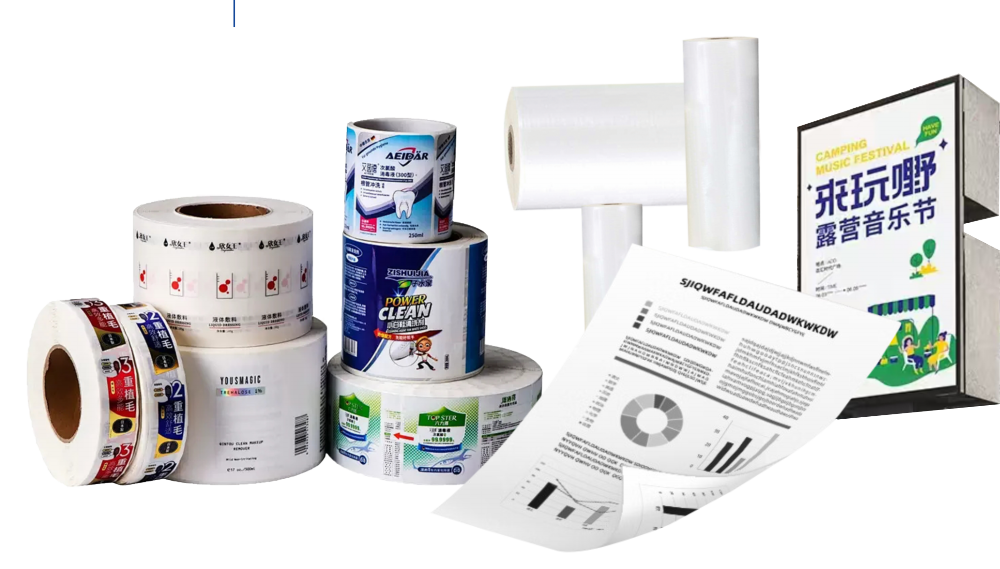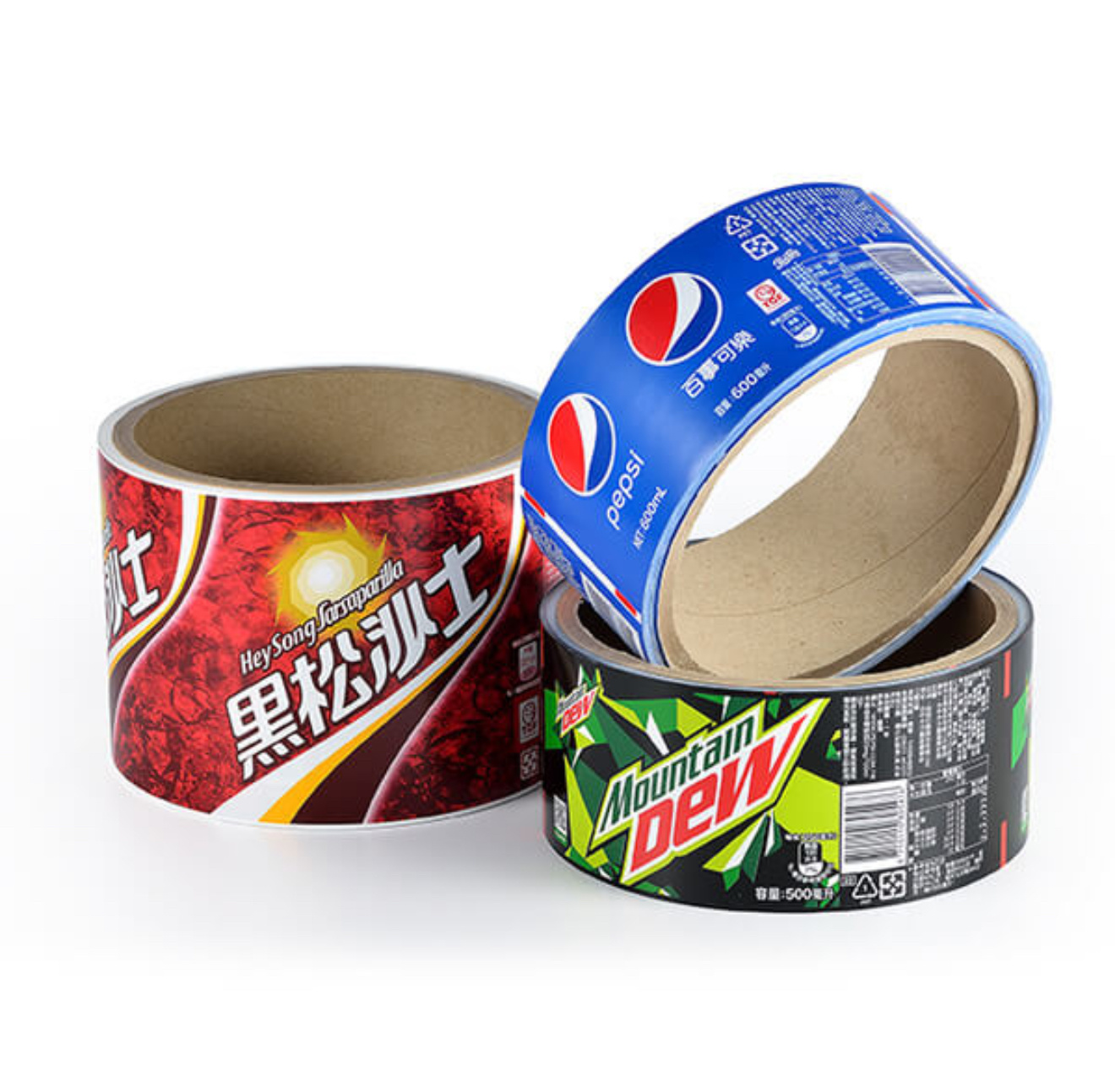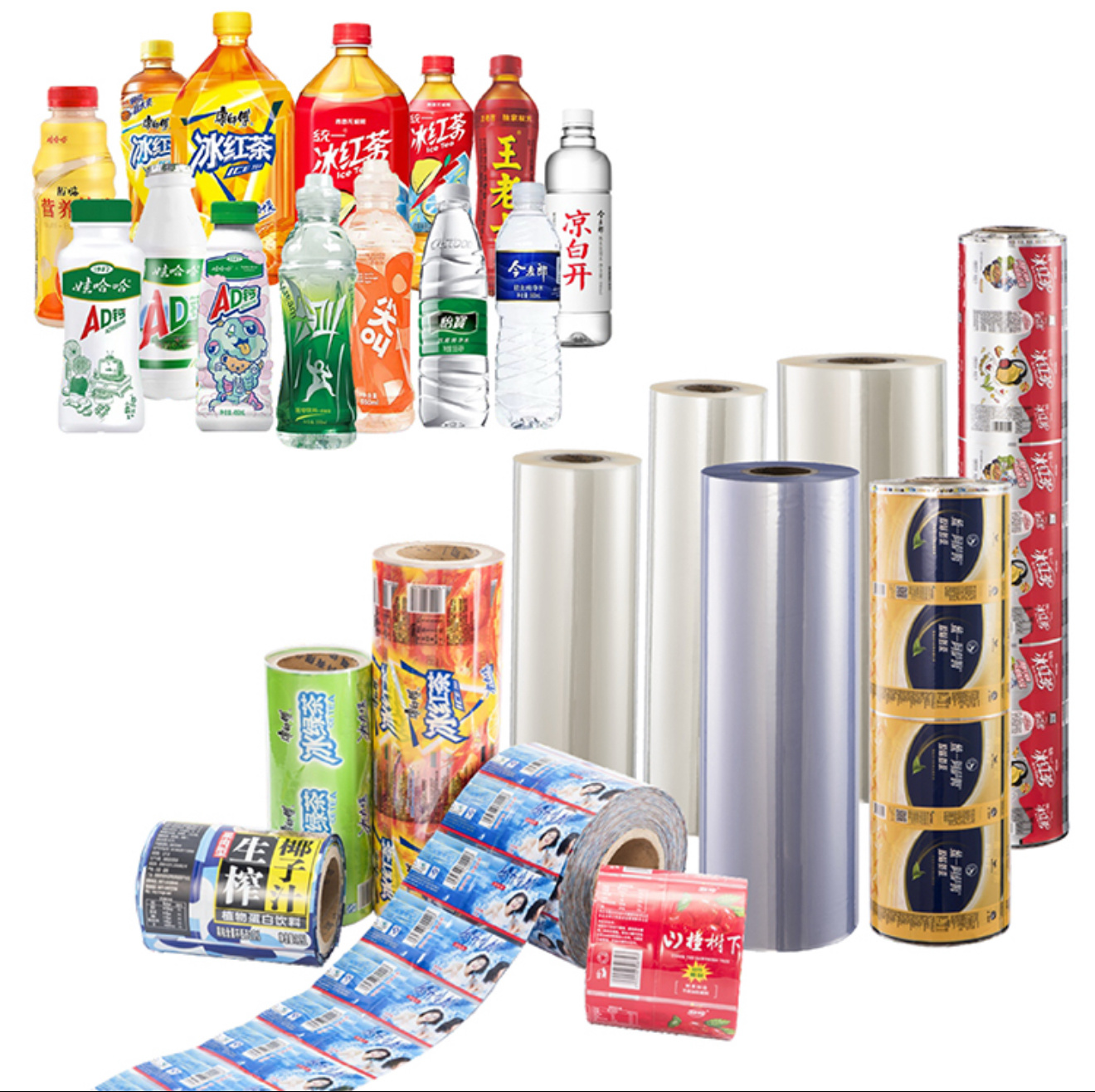11
2025
-
04
Label Film: Quality in the Details
Author:
Inner membrane

In the modern packaging and printing industry, label films play a crucial role as an indispensable material. With the increasing market demands for product appearance and quality, the types and applications of label films have become increasingly diversified. Label films are not merely decorations on packaging; they are also important carriers of brand communication, product protection, and information transmission. The following will detail the types, characteristics, and applications of label films in different industries, focusing on the analysis of PET label films and PVC label films, highlighting the pursuit of quality in label films from a detailed perspective.
I. What is Label Film
Label film is a thin film material used on packaging as a label. It is usually transparent or translucent and is used to identify product information, brand logos, ingredient descriptions, production dates, etc. It not only has decorative properties but also requires a certain degree of durability, printability, and self-adhesiveness. The choice of label film material directly affects the quality, appearance, and stability of the label during use.
Label films are mainly used in printing, packaging, and labeling applications. Common types of label films include PET label films, PVC label films, OPP label films, etc. Each type of label film, based on its unique material, function, and characteristics, is widely used in various industries.

II. Types and Characteristics of Label Films
1. PET Label Film
PET (polyethylene terephthalate) is a thermoplastic polyester material widely used in packaging, labels, electronic devices, and other fields. PET Label films, due to their excellent physical properties such as high transparency, heat resistance, and strength, have become one of the most common label film materials on the market today.
PET Characteristics of Label Film:
High Transparency: PET Label films have high transparency, clearly showcasing the packaging design underneath the label, enhancing the visual effect of the product.
High Temperature Resistance: PET Label films have good heat resistance and can withstand high temperatures without easily deforming or fading.
Tensile Strength: PET Label films have high tensile strength, suitable for packaging scenarios where they are easily subjected to external friction or pulling.
Good Printing Adaptability: PET The surface of label films is smooth, suitable for various printing methods such as screen printing, heat transfer, UV printing, etc.
Applications:
Food Industry: PET Label films are widely used in food packaging, especially on bottled beverages and canned food. Their transparency and heat resistance ensure that the labels maintain a good appearance even in high-temperature environments.
Cosmetics Industry: Labels on cosmetic bottles usually choose PET label films because they provide good visual effects and durability, adapting to different external environments such as moisture and sun exposure.
Home Appliances: Some home appliances such as televisions and air conditioners also use PET label films due to their excellent wear resistance and anti-aging properties.
2. PVC Label Film
PVC (polyvinyl chloride) is a common plastic material, PVC label film is a type of label film that uses PVC as a base material. PVC Label films are widely used due to their excellent processability, low cost, and high chemical corrosion resistance.
PVC Characteristics of Label Film:
Good Plasticity: PVC Label films have strong flexibility, suitable for various shapes of bottles and containers, and are particularly outstanding in curved label applications.
Chemical Corrosion Resistance: PVC Label films have good chemical corrosion resistance and can withstand the erosion of various liquids or gases, suitable for the packaging needs of some special industries.
Low-Temperature Adaptability: Compared to PET label films have poorer low-temperature adaptability, but in normal and medium-low temperature environments, PVC label films perform exceptionally well. PVC Suitable for Pressure-Sensitive Labels:
Label films have advantages in making pressure-sensitive labels, commonly used where easy peeling and sticking are required. PVC Beverage Industry:
Applications:
Label films are widely used for labels on beer bottles, beverage bottles, and other containers. They provide a good adhesion effect and are suitable for use in refrigerated environments. PVC Daily Chemicals: Many daily chemical products and cleaning agent labels also use
label films because of their good corrosion resistance and low cost. PVC Medical Industry:
Label films are suitable for use on pharmaceutical product labels, especially for drug packaging with high requirements for moisture resistance, water resistance, and chemical corrosion resistance. PVC 3. OPP
(polypropylene) label film is a film material based on polypropylene. Its use in packaging and labeling is becoming increasingly widespread, especially in food packaging. Label Film
OPP Low Cost:
OPP Characteristics of Label Film:
The production cost of label films is relatively low, suitable for mass production, and relatively environmentally friendly. OPP Good Transparency:
Label films have good transparency, highlighting the contents of the packaging and increasing the attractiveness of the product. OPP 标签膜具有较好的透明性,能够突出包装的内容物,增加商品的吸引力。
Abrasion Resistance: OPP Label films possess high abrasion resistance, maintaining their aesthetic appeal for an extended period during transit.
Applications:
Fast-moving consumer goods industry: such as snacks, candies, and biscuits packaging, OPP Label films offer excellent cost-effectiveness and packaging results.
Non-food industry: OPP Label films are also widely used in the packaging labels of pharmaceuticals, cosmetics, etc., suitable for simple packaging needs.

III. Applications of Label Films in Different Industries
Label films come in a wide variety of types, and different types of label films play an important role in various industries due to their performance characteristics. The following are the applications of label films in several major industries.
1. Food and Beverage Industry
The food and beverage industry has high requirements for label films. Label films not only need to have good waterproof and oil-proof properties, but also need to be able to withstand certain temperature changes. Common food and beverage packaging labels often choose PET label films because they have strong high-temperature resistance and transparency, which can better showcase the product appearance and enhance the Brand image. For some beverage bottles, such as mineral water and cola, PVC label films also have good application effects.
2. Cosmetics Industry
Label films in the cosmetics industry usually need to have strong moisture resistance, chemical resistance, and non-fading characteristics. PET Label films are particularly widely used in the cosmetics industry, especially for the packaging of high-end Brands, providing clear label content and maintaining a long-lasting visual effect.
3. Pharmaceutical Industry
In the pharmaceutical industry, the requirements for label films are stricter. They must not only have high transparency and anti-counterfeiting functions, but also be resistant to water, chemicals, and maintain the stability of the label information. PVC Label films are widely used in pharmaceutical labels, especially suitable for pharmaceutical packaging that requires moisture-proof and waterproof properties.
4. Electronics Industry
Electronic product label films usually require high heat resistance, tensile strength, and excellent printing performance. PET Due to their excellent physical properties, label films are widely used in the labels of electronic products, such as the identification of televisions, audio equipment, Mobile phones, etc.
5. Home Appliance Industry
Labels for home appliances such as air conditioners and washing machines need to be able to adapt to various environmental changes, such as high temperatures and humidity. PVC Label films occupy an important position in this industry, and due to their good flexibility and durability, they can ensure the stability of the labels under various complex environments.

IV. Future Development Trends of Label Films
With the continuous development of technology, the types and performance of label films are also constantly innovating. In the future, label films will develop in the direction of being more environmentally friendly, more efficient, and more multifunctional. Specifically, the following trends are worth paying attention to:
1. Eco-friendly label films: With stricter environmental regulations, future label films will use more biodegradable and environmentally friendly materials to reduce the environmental impact.
2. Smart label films: With the development of Internet of Things technology, smart label films will gradually Enter the market, able to interact with consumers and achieve richer functions, such as tracking product information and providing value-added services.
3. Functional label films: In the future, label films will not only be limited to information transmission functions, but will also integrate various functions such as anti-counterfeiting, anti-counterfeiting technology, and antibacterial properties.
As an indispensable and important part of the packaging industry, the types and characteristics of label films directly determine the appearance of the product, the efficiency of information transmission, and the service life. From PET label film to PVC label film, different materials adapt to different industry needs, showing the core value of label films in pursuing quality in detail. In the future, with the continuous advancement of technology, the application of label films will be more extensive, further enhancing product value and consumer experience.
Latest News
2025-08-01
Army Day|Salute to the People's Liberation Army of China
Chinafilm Group pays tribute to the Chinese People's Liberation Army
2025-07-30
Nano-wrapped film: The engine of a new era of high-performance packaging
Chinafilm Group will provide a comprehensive and systematic introduction to the fundamental theory, key properties, material composition, preparation process, typical applications, current challenges, and future development direction of nano-wound film, helping readers gain a comprehensive understanding of the technical core and market potential of this disruptive material system.
2025-07-24
Research and Application of a Novel Soft Pouch Film
Chinafilm Group provides a comprehensive analysis of the new soft pouch film industry, covering its definition, core technologies, performance advantages, practical applications, typical cases, and future trends. This analysis offers a systematic cognitive framework and practical reference for material developers, packaging designers, brand owners, and end-users.
2025-07-23
Development and Prospect of Biodegradable Film Materials
Chinafilm Group will delve into the definition, types, R&D progress, application fields, and future development trends of biodegradable film materials, aiming to provide valuable reference for industry practitioners, researchers, and policymakers.
2025-07-18
Stretch film “not sticky enough” or “too sticky”? Understand the secret of stickiness in this article
Zhongmo Group comprehensively reveals the composition principle and common problems of cling film viscosity, and provides practical film selection suggestions and processing solutions to help you accurately select films, reduce losses, and improve efficiency.

